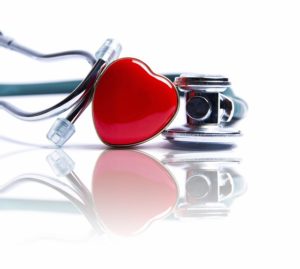The Heart’s “L” Energy
 By Georgianna Donadio, PhD – There is little question that the heart is a muscular pump that transports nutrient-rich blood throughout the body. This function is, however, just a physical aspect of what the heart does and what influences its function. As with all of our organs and systems, the heart is affected by five specific components: (1) physical (2) emotional (3) nutritional-biochemical (4) environmental and (5) worldview (spiritual).
By Georgianna Donadio, PhD – There is little question that the heart is a muscular pump that transports nutrient-rich blood throughout the body. This function is, however, just a physical aspect of what the heart does and what influences its function. As with all of our organs and systems, the heart is affected by five specific components: (1) physical (2) emotional (3) nutritional-biochemical (4) environmental and (5) worldview (spiritual).
The first popular books to explore the subject of these aspects of the heart’s function include: Heart and Soul by Bruno Cortis, M.D. and The Heart’s Code, by Paul Pearsall, Ph.D. These two highly recommended books offer varying perspectives and insightful information on the heart beyond its role as a pump.
Pearsall’s book explores in depth the emotional function of the heart and its “L” energy. Pearsall describes and clearly explains the impact loving has on a heart that loves. He also explores the effect this love exerts on the recipient of the heart’s “L” energy. His presentation on the human heart’s independent electrical system (the bundle of His – also known as the atrioventricular bundle) gives us an understanding of how the individual heart muscle has an emotional life of its own.
Current Research
The current research on cardiovascular disease contains a surprising body of information. It shows that the single greatest factor affecting your chances of having a heart attack or dying of heart disease is not high cholesterol, obesity, diabetes, high blood pressure, a diet high in sodium or fat, a type A personality, anger or rage.
Instead, as reported in the Science News Journal, the statically documented, single most predictive factor of death by heart malfunction is: hopelessness. And it has been shown that stroke risk in women is also significantly linked to hopelessness.
What Becomes Of The Broken Hearted?
Broken heartedness occurs when the heart’s desire has been thwarted or eliminated and the heart is left without hope of fulfilling its desire. It’s been said: “Where there is life there is hope.” But without hope our dreams perish and our heart breaks.
Although lifestyle elements like exercise, a healthy diet, weight control and having a purpose in life are all part of being heart healthy, it now appears that the primary, most important factor is keeping hopes alive and not giving up on our dreams. Without them, we lose our purpose and the joy for living.
A healthy heart is a hopeful heart. When you smile, you cannot be sad or hopeless. Prove this to yourself. Think a horrible thought, then really smile and see if you can think that same thought while you are smiling. You can’t.
When we smile, we tell the heart and brain that life is good and very worth living. As the saying goes: “Be happy be healthy.” When we have fulfilling, successful relationships, our hearts experience the “L” energy we all desire. Our relationships provide us the L-energy we require; we need to nurture and cultivate the best relationships we can.
For a free excerpt from the award-winning, bestselling Changing Behavior: Immediately Transform Your Relationships with Easy to Learn, Proven Communication Skills visit www.changingbehavior.org.
You may be interested in these articles:
Explore our Whole Health Training Programs.
